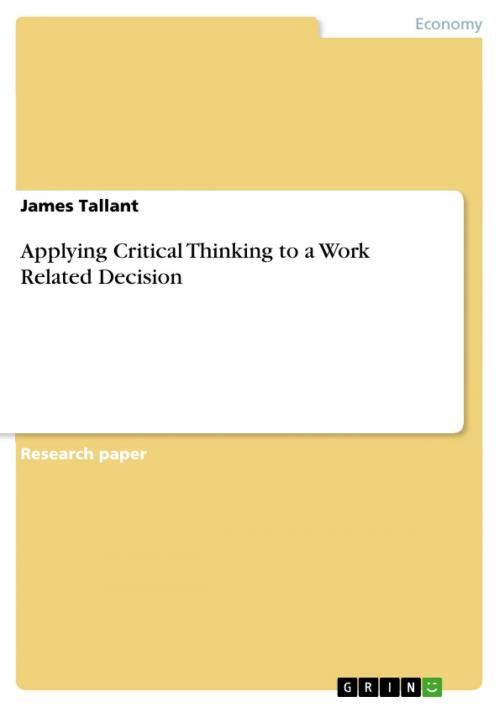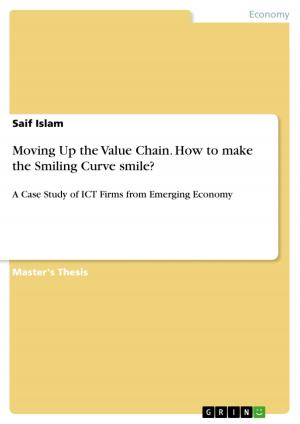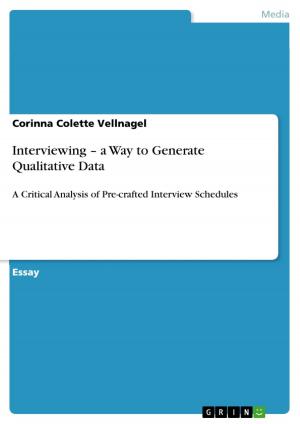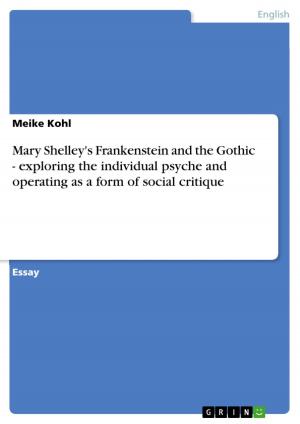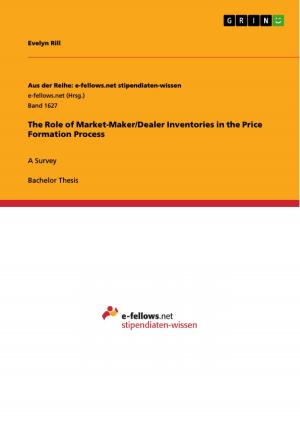| Author: | James Tallant | ISBN: | 9783640836659 |
| Publisher: | GRIN Publishing | Publication: | February 19, 2011 |
| Imprint: | GRIN Publishing | Language: | English |
| Author: | James Tallant |
| ISBN: | 9783640836659 |
| Publisher: | GRIN Publishing |
| Publication: | February 19, 2011 |
| Imprint: | GRIN Publishing |
| Language: | English |
Research Paper (undergraduate) from the year 2008 in the subject Business economics - General, grade: 92.5, University of Phoenix, course: MGT 350 Critical Thinking: Strategies in Decision Making, language: English, abstract: Applying Critical Thinking to a Work Related Decision Critical thinking is a multi step process that aids individuals in problem solving which is to identify real problems and finding a strategy to fix the problem. Many forms of decision-making models involve critical thinking process. In most cases, critical thinking is based on several foundations. Trabandt (2002) comments that critical thinking can be divided into four steps: 'identifying the problem, explore interpretations and connections, prioritize alternatives and communicate conclusions, and integrate, monitor, and refine strategies for re-addressing the problem' (p.1, ¶2-5). Within these steps individuals can generate possibilities, analyze, compare and contrast, infer and interpret, and evaluate and met cognition (Critical thinking crucial to global success, 2002, p.2, ¶7). As a result, the ability to identify and apply each of these critical thinking components is important to good decision making. Before applying critical thinking, an individual must be aware of the four fundamental steps that occur in the decision cycle. According to Helliwell (2002) four fundamental steps that occur in the decision cycle are: Analyzing the problem or opportunity to understand the need for a decision, Integrating and weighing the importance of all sources of information, Applying commercial intuition to the logic of the decision as it takes shape, and often referred to as 'Gut Instinct', the value of commercial intuition should not be downplayed when analyzing the potential positive and negative impacts of the decision (p.45, ¶7). When applying critical thinking during the decision making process in business, shrewd, wiser, constructive, and productive decisions and results often occur.
Research Paper (undergraduate) from the year 2008 in the subject Business economics - General, grade: 92.5, University of Phoenix, course: MGT 350 Critical Thinking: Strategies in Decision Making, language: English, abstract: Applying Critical Thinking to a Work Related Decision Critical thinking is a multi step process that aids individuals in problem solving which is to identify real problems and finding a strategy to fix the problem. Many forms of decision-making models involve critical thinking process. In most cases, critical thinking is based on several foundations. Trabandt (2002) comments that critical thinking can be divided into four steps: 'identifying the problem, explore interpretations and connections, prioritize alternatives and communicate conclusions, and integrate, monitor, and refine strategies for re-addressing the problem' (p.1, ¶2-5). Within these steps individuals can generate possibilities, analyze, compare and contrast, infer and interpret, and evaluate and met cognition (Critical thinking crucial to global success, 2002, p.2, ¶7). As a result, the ability to identify and apply each of these critical thinking components is important to good decision making. Before applying critical thinking, an individual must be aware of the four fundamental steps that occur in the decision cycle. According to Helliwell (2002) four fundamental steps that occur in the decision cycle are: Analyzing the problem or opportunity to understand the need for a decision, Integrating and weighing the importance of all sources of information, Applying commercial intuition to the logic of the decision as it takes shape, and often referred to as 'Gut Instinct', the value of commercial intuition should not be downplayed when analyzing the potential positive and negative impacts of the decision (p.45, ¶7). When applying critical thinking during the decision making process in business, shrewd, wiser, constructive, and productive decisions and results often occur.
